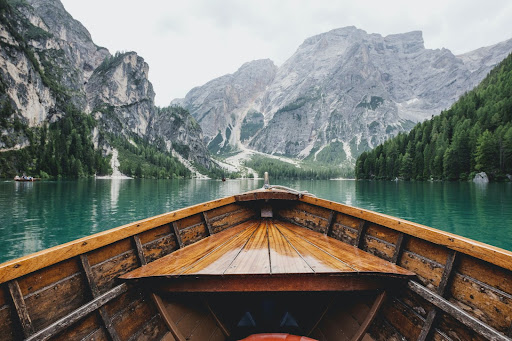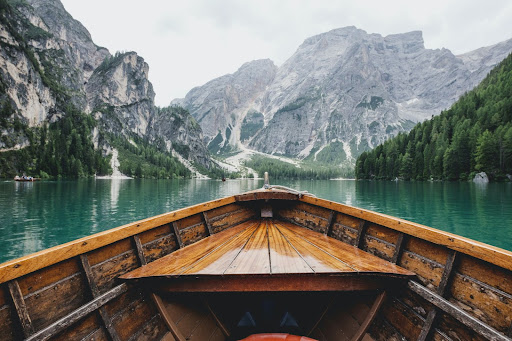The Travel Industry Might Be The Latest Example of True NFT Utility
Disclaimer: The Industry Talk section features insights by crypto industry players and is not a part of the editorial content of Cryptonews.com.

From the time that the term “NFT” started to hit mainstream news platforms, it became a subject of great interest. There was wide speculation on what these NFT’s could do, whether they were a fad, a revolution, or a farce. There was a tremendous amount of misunderstanding in terms of what an NFT can and cannot do, with many a comedian stating that you could skip the buying part of the art NFT by simply taking a screenshot. Many wondered, and still do, exactly what “fungible” really means. However, despite the chaos at the level of the public consciousness, there was a lot of activity happening with NFTs, with investor interest, and with use cases. While the most common use case we’ve seen, the so-called “art NFT” has dominated the market, there has been an effort by many researchers and entrepreneurs to better understand the attributes of an NFT in order to see what other utility they may hold. The NFT fad/bubble somewhat tarnished the reputation of the concept at the mainstream level, but as the dust has settled we’ve seen new and fascinating uses of a unique, on-chain artifact that is owned by an individual. Let’s examine a specific use case that can use the NFT vehicle as a way to gain continuous investment by applying it to the travel industry. We’ll examine the set up, pros and cons, and explore one of the pioneers for this use of NFTs: Arakis.
Why Do We Need NFTs for Investment Models?
NFTs are incredibly versatile. An NFT can represent ownership of something else, it can be a collectible of its own, and it can act as a representation of privilege, giving access or rights to some benefit. This last use case is especially interesting as it opens up the equivalent of ownership shares, allowing many people to own a small piece of something very valuable. There has been more interest in this lately, with the platform Masterworks offering shares of famous paintings and claiming impressive returns. However, in the case of Masterworks an NFT is not an element of their business. This is excellent because we can better understand the role of an NFT in this type of model. For example, not having an independent NFT that you as an individual own means that you must go through the centralized platform to perform any actions you may want as the investor. Gaining the return on the investment, selling your share to someone else, and ensuring that your investment is not stolen by fraud or theft are all completely dependent on a centralized team and platform. As we’ve seen in the last few years, centralized platforms can come with major risks. Insider fraud, outside hackers, insolvency; all of these have plagued both crypto and TradFi platforms. The promise of decentralization is reducing risk, giving the individual complete ownership and possession of their assets, and letting them hold/invest/trade/sell them as they see fit. The NFT is this critical vehicle for this to happen, bringing the investment on-chain where it benefits from Web3 security, transparency, and individual ownership.
NFTs for the Travel Industry
Now that we’ve established the importance of an NFT and its capability for decentralized investment, let’s look at this through the lens of the travel industry. In terms of what NFTs can offer, what would be some interesting ways to use them for travel?
The obvious would be to treat them as collectibles, almost souvenirs, making limited batches of NFTs that represent certain landmarks, cities, etc. This could be an interesting market, but immediately has the same issues of ordinary souvenirs today. Anyone can make them, very few landmarks, cities, or other travel hot spots are trademarked so the market becomes quickly saturated if there is any money to be made. There have been efforts to curb this oversaturation not through trademark protection, but Geo-tagging. Projects like Lost Worlds are creating limited edition NFTs that can only be purchased at the specific locations they are at, with the GPS position of the individual’s device unlocking the ability to get that NFT. Even this can attract imitations and competitors, though it requires at least some sophistication and creativity to keep out opportunistic copycats.
When we think about travel though, it’s about enjoying the unique scarcity of where we are visiting. Location, Location, Location, and part of this scarcity includes the hotels, resorts, the tours, the restaurants. These are valuable investments, unique to their offering and location, and can’t be imitated (you can’t build another hotel on top of the one that currently exists).
Using NFTs for Revenue Sharing
This is where the Arakis model comes into play, focusing on finding value where it can’t be duplicated, thus using all the advantages of an NFT while preventing its biggest weakness. The model focuses around creating an NFT called the Revenue Sharing Token (RST). This takes in elements similar to the Masterworks project, adds the NFT element for decentralized freedom/ownership, and applies it to the travel industry to create a massive market potential. Very simply, their model works like this: Arakis is partnering with many different businesses in the global travel industry. For those that want to participate, they will create a limited series of their RSTs, selling them on the market to interested individuals. Those buying the RSTs don’t have to visit the location, as the RST is an investment rather than a collectible. For example, the platform is partnering with the Hilton in Paris, with a set of RSTs minted for sale. The key to this model is not just the hope that the NFT will increase in value (though this is also likely), but that the ownership of an RST gives the holder right to a share of profit each time someone books a room at that location through the Arakis platform. This will be applied to participating airlines, car rentals, and could even be applied to specific tours, experiences, famous restaurants, etc. This use case has the potential to transform the travel industry, benefiting the travel companies with fresh investment funds, and benefiting RST holders with very simple way to expand their portfolio, invest in their favorite locations, and find a way to enjoy their travel even more when they have a stake in the process.
What’s Next?
The Arakis RST model has the potential to completely democratize investment opportunities. However, it also has the potential to unlock many new use cases for NFTs as a whole. If successful, this blueprint could be easily applied to just about any industry, changing the investment model and creating a more borderless, universally accessible way for people to earn profit-sharing without having to raise massive funds to invest. The next few years should be exciting to watch as NFTs mature, find their place in the world, and explore new roles to play.



